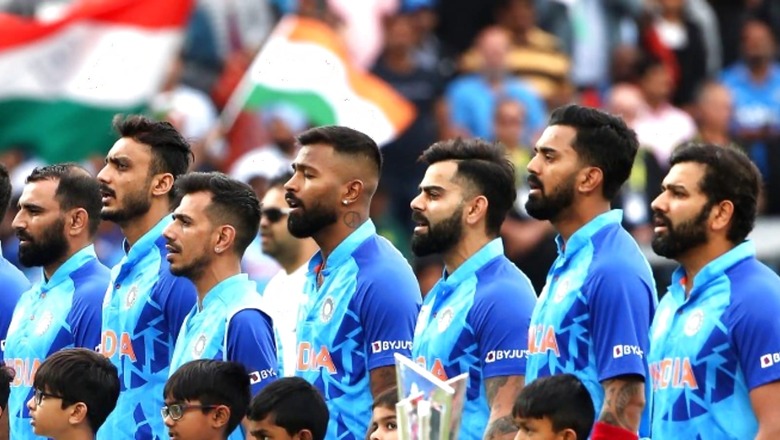
views
Much is being written and talked about Team India’s disastrous performance against England in the T20 World Cup 2022 semis – how they failed to handle the pressure, how they couldn’t perform with the bat, ball or on the field among others. But for me the famed Indian team lost the tournament the day the squad for the showpiece event was selected.
Though the Indian fans wanted their team to win T20 World Cup after 15 years, let us accept that the team was not suited to do well in the format. It would have been a miracle if India would go on to win the cup but miracles happen once or twice, not all the time. Now the discussion should be around how to rebuild a good Indian T20 side which can win the 2024 T20 World Cup.
T20 World Cup 2022: A Tournament for the Ages!
Let us first analyse where we went wrong and how we can learn several things from England who became the champions by defeating the talented Pakistani side in the final.
The Indian side that crashed out of the semifinal against England was not a 21st century T20 team. It was an ageing team as over fifty percent of the players were on the wrong side of 30. It was not the fittest bunch either.
One of the reasons why India went on to win the inaugural World Cup in 2007 was because the team was full of young players – fit, fearless and agile. India, by design or by chance, somehow, cracked the T20 code back then. But after that they haven’t and hence failed to win the world cup again.
The 2007 team showed us how a bunch of inexperienced, fearless, physically and mentally fit cricketers can do wonders and bring laurels to country.
Despite being the superstars at that time, all the big guns – Sachin Tendulkar, Rahul Dravid, Sourav Ganguly– stepped aside from the event – and allowed rookies like Rohit Sharma, Gautam Gambhir, MS Dhoni, Joginder Sharma, S Sreesanth and Yuvraj Singh to showcase themselves in front of the world.
But this year’s team was bound to fail as the ageing and unfit players like Rohit, KL Rahul, R Ashwin, Bhuvneshwar Kumar, Mohammed Shami were there in the team whereas England, or Pakistan, for that matter, have a much younger and a super-fit team.
In batting, bowling and fielding they had a flavor of a Test team rather than T20s.
Indian selectors seemed to have confused selecting a T20 team with that of a Test or ODIs and forgot that to win different formats, you need to have different bunch of cricketers. India needed more players with purely T20 abilities like what England selected in Liam Livingstone, Harry Brook, Alex Hales, Phil Salt who play the new brand of cricket suitable for the shortest format.
They may not be great Test players but they are the stars in T20s. In batting, they are all 360 degree players who can hit the ball all around the park. They showed courage in selecting their team and did not even hesitate to drop Test talisman Joe Root purely on skills. In India’s batting we had only Suryakumar Yadav who has this kind of ability. All other batters were more orthodox in their approaches and that’s why they sometimes were slow in run-making or got restricted by good, tight T20 bowling as what we saw in the first 10 overs against England.
Nowadays in every good T20 team we see one or two high quality fast bowlers and a good quality wrist spinner. Though it’s said that T20 is a game of batters but if we observe closely, the teams with good bowling line-ups ultimately win most matches on good flat surfaces around the world.
The first semifinal match Pakistan won against New Zealand was because of their superior bowling attack. They have three top-class pacers and a genuine wrist spinner in Shadab Khan and they restricted in-form New Zealand around 150 which helped them secure a place in the final. Even England have two wrist spinners in Adil Rashid and part-timer Livingstone while New Zealand have Ish Sodhi.
Even a team like Sri Lanka, who failed to qualify for the semis, had a quality legspinner in Wanindu Hasaranga who was quite impressive throughout the tournament.
Among the four teams that qualified for the semis, India were the only bowling side which lacked a quality fast bowler or a wrist spinner and that they were going to be smashed by the hard-hitting English side at Adelaide Oval was a forgone conclusion.
Also Read: T20 World Cup 2022 Recap
Indian pace attack comprising Bhuvneshwar, Shami and Arshdeep Singh was more swing oriented and they might have done well in England but in Australia, with their pace, they would have bound to be hit out of the park as the England batters did. The finger spin of Axar Patel and Ashwin was insipid and not suited for the Australian pitches and they were mercilessly hammered by every team in the tournament.
Has anyone given a thought that in the semis, why India batted so slowly in the first six overs after the loss of Rahul and why England’s top two played fearless shots from the word go? It’s not that Indian batters can’t play those extravagant shots but the different batting approaches came from the same psychological aspect.
Whereas England top order batters knew that in trying to get more runs if they lose wickets, there’s the cushion of the middle and lower middle order batters since they bat quite deep. Can you imagine players like Sam Curran and Chris Woakes bat at 8 and 9!
Indian top order batters don’t have that luxury as they don’t have anything after number 6 and that gave England top batters a psychological edge.
Like class, current form of a player is also an important aspect to win an event like the World Cup. But India took quite a few out-of-form cricketers like Rohit, Rahul, Rishabh Pant, Axar, Harshal Patel and Bhuvneshwar. And so, they were bound to suffer.
As most of us would agree that T20 is a completely different game altogether, India need to have a new T20 coach and a captain who can apply innovate approaches in this format. England showed how every team needs to have different plans in their batting and bowling department. Their batters were more flexible and innovative. There was no rigidity.
Indian selectors should accept that T20 is a fast evolving format and they need people at the helm who are innovative and can stay ahead of the curve.
It’s not that we don’t have T20 specialists in our domestic circuit. Batters like Ishan Kishan, Ruturaj Gaikwad, Prithvi Shaw, Rajat Patidar, Tilak Varma, Jitesh Sharma, Abhishek Sharma, Yashasvi Jaiswal; allrounders like Shabhaz Ahmed, Raj Bawa, Rahul Tewatia, Washington Sundar; bowlers like Ravi Bishnoi, Deepak Chahar, Umran Malik, Mohsin Khan, Kuldeep Sen and Kartik Tyagi have performed well in the IPL and domestic circuit. It is time they should be given a chance in the Indian T20 set-up and see how they handle the pressure of international cricket.
Get the latest Cricket News, Schedule and Cricket Live Scores here




















Comments
0 comment